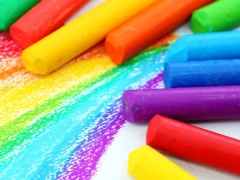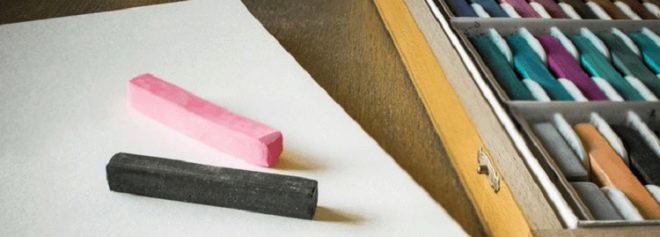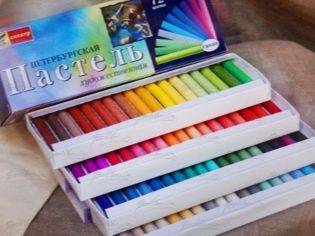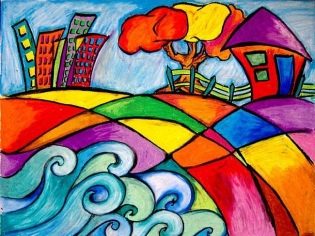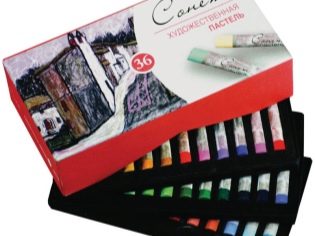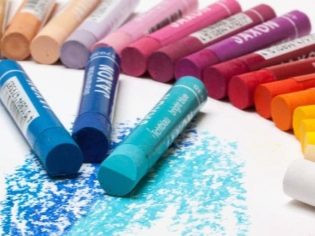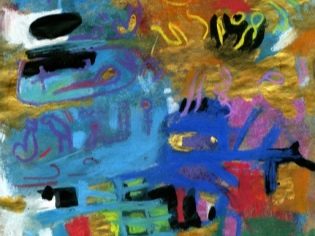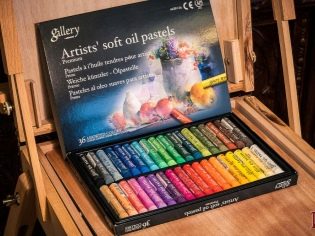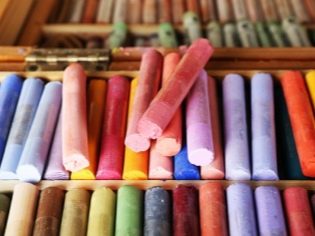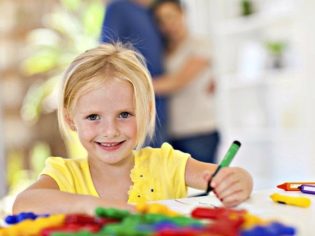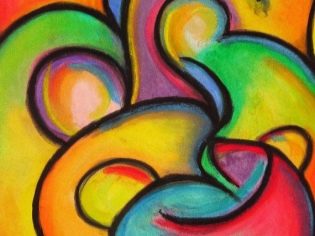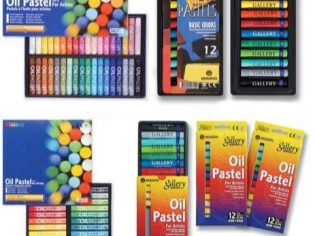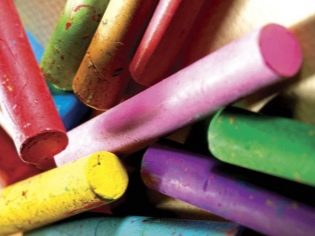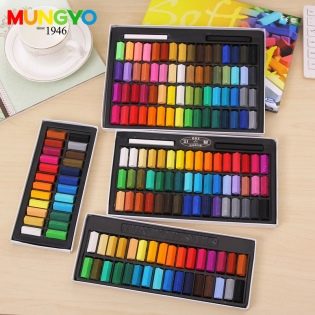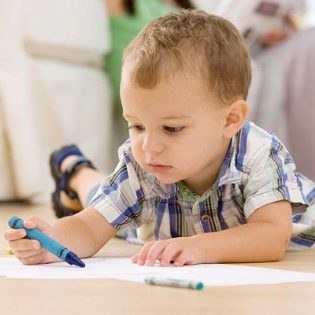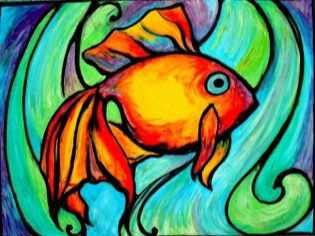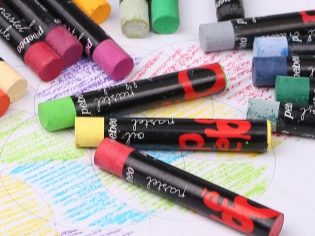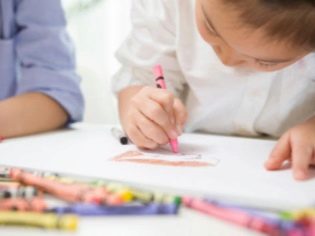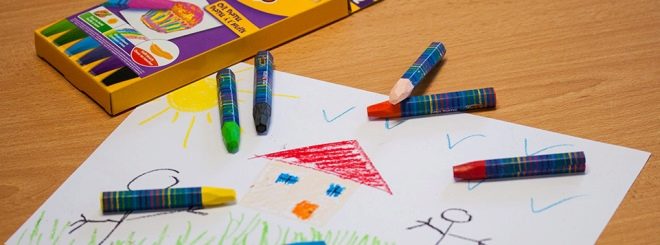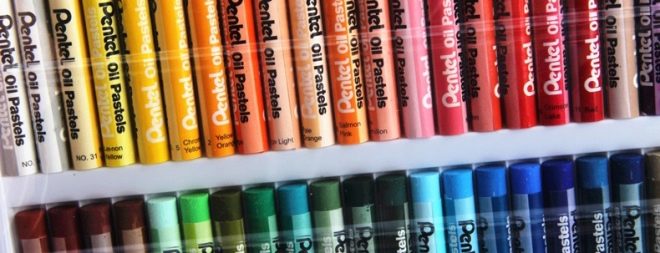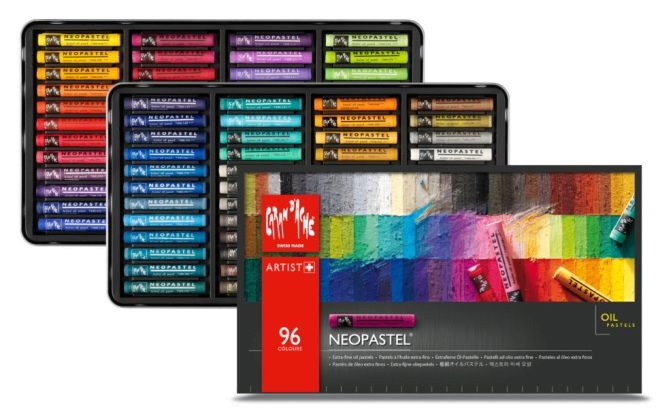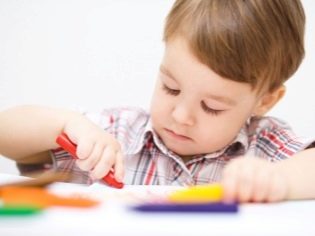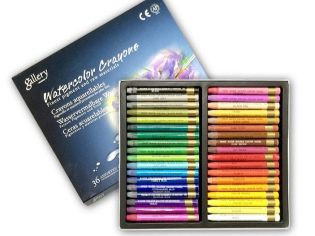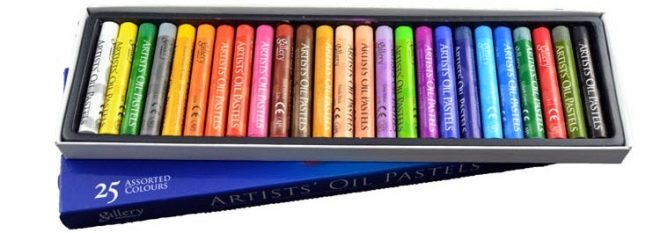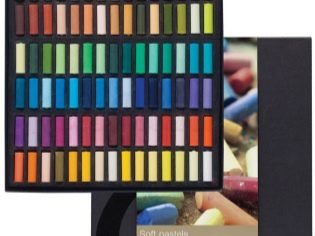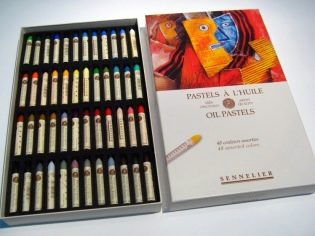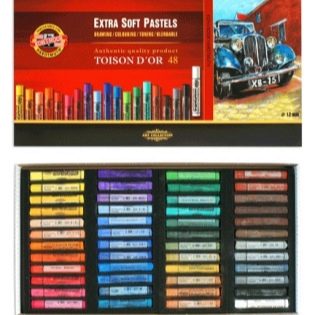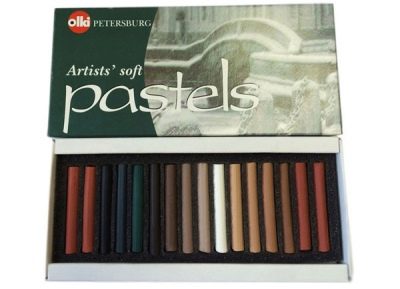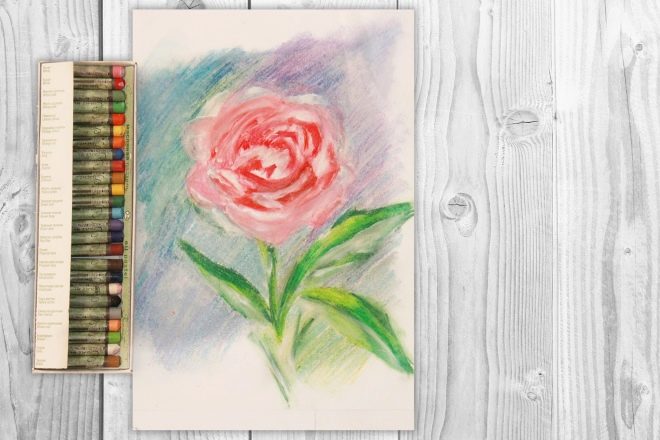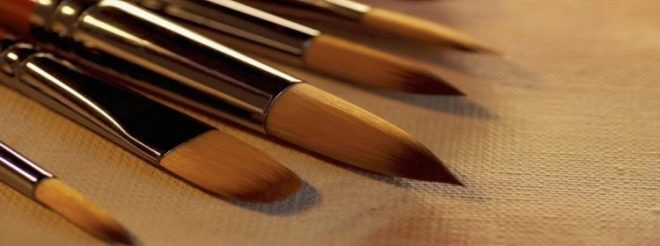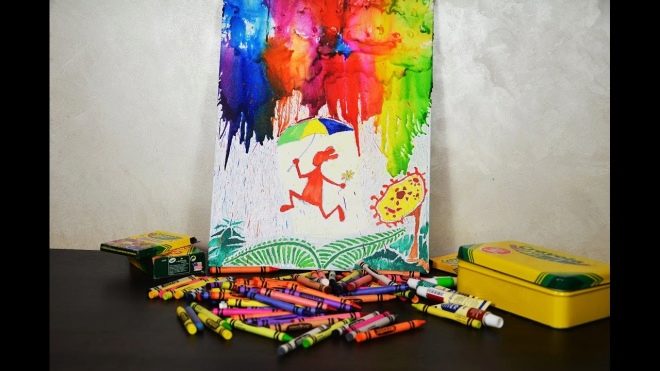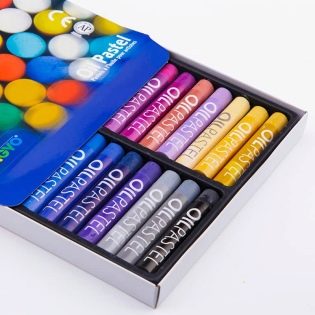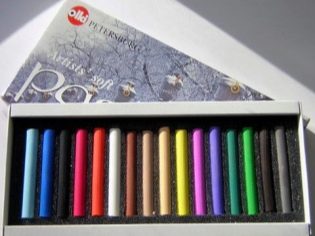Pastel: types and features of use
Drawing has long ceased to be exclusively an art form - today it is a daily hobby for tens of millions of people on the planet, as well as a great way to develop children creatively. Absolutely every child in the world tried to draw in one way or another, but those who got carried away and managed to find the means to give their hobby consistency and at least a little more complex form than drawing in the sand, managed to come up with many different ways to convey visual images .
Nowadays, children, at least in developed countries, usually draw with pencils and felt-tip pens, or with various types of liquid paints — gouache, watercolor, and so on. At the same time, more and more specialists in children's development indicate that one of the most suitable materials for children's fine art could be artistic pastels.
What it is?
In fact, quite a few great artists of the past used this particular type of dye to create their paintings, so the name is familiar to many, but not every person has a clear idea of what it is, unless he himself has a direct relationship to drawing. At the same time, the adjective "pastel", meaning a very gentle, soft shade of a certain color, comes precisely from the word "pastel", since this means for drawing gives exactly this result.
Actually the pastel looks in something similar to an ordinary chalk for drawing, and an inexperienced person is not always able to determine the difference between them in appearance.
Unlike crayons, which always have approximately the same consistency, pastel is both very hard and rather soft, which is used in various drawing techniques to obtain a special effect.
This invention appeared approximately in the XVI century. more precisely, from this very moment we see pastels in the works of many artists of that time. Then the factory method of release did not exist yet, and each painter created a mass himself, mixing any dyes with water and chalk for greater softness of the finished shade. After the mass dried, it was cut into pieces, making such "crayons", with which, naturally, precise details were a little easier to paint than with a brush.
True, because of the general dryness of the material, it does not adhere well to ordinary paper, so it was necessary to paint on rough surfaces, but this did not prevent active use of pastel by such eminent masters as Renoir, Vrubel or Serov. In this case, you can find only pastel paintings, but very often such a dye on the canvas is combined with liquid types of paints.
Today, pastels are made by hand only by real people of art for their own use, but for the masses it is made at special enterprises on an industrial scale. To do this, take one or more dyes needed to obtain an accurate shade, and some resin base that will hold the coloring matter in a given form - for example, gum arabic.
Generally. dyes can be completely different, but still for the classic pastel recipe, chalk is almost obligatory as a softening component. All the necessary ingredients in the right proportions are mixed and carefully ground together until they reach the state where it is no longer possible to separate them from each other.
The finished mass is laid out in special patterns and forms, cut, and then pressed under high pressure. After that, the already formed cubes are sent to the oven, where they are dried in a very gentle manner - at a temperature in the range of 60-80 degrees. The exact temperature and drying time depend on the proportions of the raw materials and the desired hardness of the final result, since you can never rely on this. The fact is that too dry pastels will crumble in your hands and will not hold on to the future picture at all, well, an under-dried one can spoil and mold, which also does not contribute to the successful creation of images.
The last stage is packaging. Pastel is a rather fragile material, besides it is very sensitive to excessive moisture, so it is usually packed in thick and thick cardboard packages, and the spaces between the individual sticks are also additionally filled with foam rubber or any other soft filler.
Pastel usually comes to the consumer in the form of a set - there is enough for a child and a standard one, containing about 6-12 pieces, but professionals can count on an incredible amount of colors (up to 268 pieces).
Less commonly, pastel is also supplied as a placer, but such a product is more interesting to those who have been engaged in artistic craft for a long time. For a child, this option is useful only if he has already managed to show tremendous progress in this matter.
Advantages and disadvantages
If we talk about children's creativity, then the pastel specially designed for this purpose, of course, has much more than minuses. Highlight the most important among the benefits:
- Softness. Compared with most pencils and crayons, children's bedding requires much less effort to leave a mark. If for older children it is not so important, then for the youngest it is an important factor that allows you to start learning to draw earlier.
- The ability to draw on paper. These are only the original samples of centuries-old pastels that required a rough surface to paint, but today's soft pastels, which contain a fairly large amount of moisture, cling pretty well to almost any horizontal surfaces.
- Overlapping layers. Lying on the paper, the pastel is not absorbed into it, but covers the surface with a thin layer of its constituents - a dye with chalk and a binder. This means that with any error, there is no need to remove the wrong image from the surface of the paper.
It is enough just to “repaint” this area again until the new image overlaps the old one. At the same time, a light shading with one color over another will allow you to leave a certain transparency effect, creating new shades.
- The simplicity of artistic methods. Pastel is also good because it does not require any extras. To draw with liquid paints, they need to be properly diluted, learn to hold a brush, mix colors and so on, and you just need to hold pastel chalk in your hands. Unlike the same pencil, it does not need to be sharpened - it draws from all sides. At the same time, what especially pleases the smallest, the layer of pastels on the surface of the paper is perfectly smeared with a finger, which allows you to create even more vivid, though not always meaningful, images.
- Brightness and unusual. In the end, pencils and felt-tip pens are a terrible banality, and only a very small percentage of people master the watercolor technique at a relatively decent level. Pastel is a great opportunity to bring something new to your own creative life.
However, there are also certain drawbacks, because if the pastel were completely devoid of cons, it would seem strange that children usually paint with something else, rather than with this amazing tool. First and foremost, the wider use of pastels is hindered by the unfortunate fact that pastel drawings are very malleable to the environment. Due to the dry nature of the dye, the canvas with the image can not be bent - even just shaking, because the picture covering the surface with a thin layer will just crumble off, and even if it doesn’t happen entirely, the original idea will still be hopelessly destroyed.
Besides, danger of pastel paintings and increased humidity, after all, not only a pastel bar, but also a whole pastel pattern can moldy. Consequently, it is quite problematic to keep creations from pastels at home, and if the child has definitely achieved success in drawing, then he clearly wants to save his drawings for a longer period.
Pastels are ignored by many parents due to the fact that it is in some cases much more expensive than the same pencils. A quality set of a relatively modest set (12 colors) can cost the family budget up to half a thousand rubles, and yet not every parent is willing to lay out such amounts so that the kid gets only the first concept of drawing, even in the most comfortable conditions.
Perhaps in this situation it is just worth paying attention to cheaper products - sets with a smaller color gamut and not the most famous manufacturers will be in the price segment and up to 200 rubles.
At least, every child is literally obligated to try this material at least once in his life - who knows, what if this is his future?
Kinds
With the choice of this material is not so simple - artistic pastels for drawing on paper are available in several varieties at once, each of which has its own purpose. Most often, the consistency of pastels is divided into soft and firm, and what particular subspecies a substance belongs to is determined even at the production stage by simply changing the proportions — either more dye and less connecting substance, or vice versa.
For children, soft pastels are often bought - the percentage of paint in the composition is as high as possible, therefore any pattern made with this substance looks very bright and attractive, and, of course, requires almost no pressing.
Due to the higher humidity, the milder variety is much safer on the paper, so you don’t have to reinvent the wheel to save the picture. However, this material is crumbling very much, and you can’t even drop it, otherwise you’ll get powder instead of chalk.
But professional pastels are always solid, they make both more familiar pastel crayons and pastel pencils out of it. This substance is much stronger - it has such a high density that the pieces can even be sharpened, which is actively used by professional artists, using this option for drawing small parts, shading and other similar purposes.
The chances that such a block will break itself are much less, however, it is always worth remembering that the trace from it does not have such attractive brightness, and it’s not worth trying to apply to any paper.
Pastel is classified, of course, and on a complete set. Professional artists usually get either huge sets with dozens of different shades, or they buy material for drawing by the piece, just replenishing those stocks that they already have with the right colors. Of course, you can also buy piece pastel crayons for a child, but if he only learns to draw, and this is also his first pastel, then for a start it is better to purchase a relatively small set - 10-18 colors, maximum - 24.
The child does not need a wider color variety at the initial stages - he has not yet developed his own vision of colors, so that a wide variety of shades will drive him to a dead end rather than help him find the perfect one.
It’s another thing if this hobby is serious and for a long time: then you can take sets of 36-48 colors, and although they will cost much more, you should take into account that their weight is also much more. You can once buy such a large set, and then just as needed to replenish it with piece tones.
Finally, it should be borne in mind that most of the dyes in the world are created not only for drawing on a plane, but also for decorating any three-dimensional objects, and pastel is not an exception. In particular, it can be used to paint crafts made from fabric. For example, it is often used to impart a complete aesthetic appearance to foamiran flowers.
If we talk specifically about this material, it has a very smooth surface, respectively, the dye is better for him to choose a soft, leaving an expressive mark. However, in this branch of art, the choice of pastels very much depends on which particular fabric was preferred, so this topic deserves separate consideration.
Composition
In addition to the classic pastels, whose composition has already been described above in general, there are other modern variants, the ingredients in which differ somewhat from the generally accepted recipe, which makes it possible to obtain a slightly different result with a general similarity of the substance.
If a classic recipe always gives a more or less dry chalk, then alternative recipes usually target a wetter composition that combines much better with paper, and therefore allows you to paint on almost any paper surface, and even with a long-term result. Consider all the alternative pastel variations in more detail:
- Oily. The name is true - flaxseed oil is a kind of adhesive. However, the oil and pigment alone would not hold together, so the crayons are pressed to a solid state. In this case, the presence of fat is very noticeable - crayons leave greasy traces on the fingers, with time stains may even appear on the reverse side of the picture. Due to the presence of liquid fat (relatively high humidity), the colors are brighter, while the shades are difficult to mix, and they do not smear with a finger at all, because they are absorbed into the paper, but on the other hand, such a pattern does not stain and the lines do not float.
There is a technique of feathering pastels, already applied to the paper, with the help of a solvent on a brush or a special stick, resulting in pictures that look like oil paintings; nevertheless, any professional will immediately see the difference and appreciate the unusual, so that it is real artists who usually use this tool.
- Wax. In this type of pastels, there is no oil, but there is polymer wax, which allows the substance to resemble oil pastels in its properties, but at the same time, it costs less and becomes less dirty, which makes wax pastel crayons an ideal gift for children. Due to the specifics of the wax itself, such a chalk even paints on glass, but on the hands it leaves no stains, and indeed it is somewhat more solid. Often wax pastels are used in combination with the usual watercolor or gouache, but only strictly on top of the paint, because the wax does not absorb and does not let through.
- Watercolor. This material is a cross between classic watercolor and pastel.It is also based on wax, but here, by percentage, this component loses much to dyes, so a simple drawing looks like it was made with oil crayons, and a diffuse one - like made with watercolor in an unusual technique.
Watercolor pastel is almost the same as watercolor pencils, however, it leaves a brighter mark and is generally softer, and also due to the larger contact surface allows you to paint larger objects faster.
Color palette
What else is good pastel - so this opportunity to carefully select the desired shade. First, most of its varieties allow you to mix different colors, creating new shades, with the utmost precision conveying the artistic intent of the author of the future picture. Secondly, for real artists, industrial enterprises produce a huge variety of colors, because in one set there can be more than two hundred different tones, the names for which are unknown to most ordinary people.
Color pastel is sold not only in sets, but also individually, however, in order to find the desired shade, will have to search for a really large profile store.
You can further diversify the color palette if you consider that different types of pastels are more or less bright. With a combination of different formulations, you can achieve a virtually unlimited number of tones that will make even an experienced artist to get lost.
At the same time, one should be careful when mixing different compositions - sometimes their properties are rather poorly compatible.
Firms
When choosing any new product for themselves, many people who do not understand the relevant industry prefer to rely on the name of the well-known famous brand - they say, since these guys deserve respect all over the world, it means that they definitely do not produce bad products and I will surely be pleased . Or, at least, I will get an unsightly idea of what I am trying to know. This approach is largely fair.
If we talk about quite expensive and professional pastels, then you should pay attention, perhaps, to those brands that can be called specializing in such products. These include the Dutch company. Rembrandt and their compatriots Talles, as well as the French brand Sennelier, the famous simply amazing selection of shades, numbering 525 different tones!
However, it should be taken into account that the products of all these brands, being not just foreign, but also professional, will be very expensive, therefore, if they buy it, it’s either very rich parents or families with real young talents .
You can save a few finances, while not losing much in quality, if you pay attention to brands that do not chase recognition by world-famous artists, but still create a very high-quality and relatively inexpensive product.
There are dozens of such brands around the world, for example - Korean Mungyo or italian Maimeri. Famous company of Czech origin Koh-i-noor in our country, better known for its pencils, it also makes pastels, which in the world of creative people are highly valued.
Naturally, for budget use it is best to purchase domestic products, since on average it turns out to be much cheaper than foreign products, although the question remains as to its quality. Of the Russian companies involved in the production of pastels, a certain positive fame has earned the brand products Olki. At least, if we are to choose from ours, then it is she who is usually preferred by knowledgeable people.
At the same time, it must be said that this list is far from complete.The assortment of the world's leading companies changes from year to year, the positions of the ranking change places, and generally in creative work it is better to be guided by some kind of personal criteria, and not at all by generally accepted ideals. therefore Do not be afraid to purchase those types of pastels that are not mentioned in our article. Look for your own, and perhaps you will be more satisfied with your own discovery than with the advice of experts.
Additional elements
Pastel is such a simple device for drawing that you can use nothing at all except crayons and any suitable surface, but this does not at all mean that preference is necessarily given to the most primitive technique.
Take even the same paper. Although wax pastel draws on anything, other types of crayons are not so clingy, and special albums made of corrugated paper are produced for them, where even the texture itself will contribute to the unusual appearance of the masterpiece. In addition, in pastel albums, different sheets are usually made not white, but simply certain neutral shades, which allows you to beat the tone of the base for the image of one of the details of the picture.
Pastel is different from ordinary chalk, which makes it possible to use additional means to make the result similar to oil painting.
Young children instinctively smear a layer of dye on paper with a finger, which is used even by professional artists and allows them to feel the material better, however, feathering can also be carried out with the help of other suitable objects. To do this, you can buy ordinary brushes for drawing different thickness and stiffness, often use also pieces of ordinary sponge. Wherein It is necessary to take into account the properties of not only the tool for feathering, but also the pastel itself.Because some species are shaded more easily, while others are harder, but even those that can be smeared can do it with different effects.
Finally, it would be strange if the pastel easily crumbling from many surfaces lasted for so many centuries - old paintings with its use simply would not live to our days, and it would, at best, remain an option for children's temporary art. To draw drawn and allowed even to shake the canvas during transportation, use a special fixative, i.e. fixer. Today, the fixative is produced industrially and is sold in small jars, from where it is sprayed through a spray bottle onto a painting that is considered complete.
Homemade craftsmen claim that ordinary hairspray also copes with this task quite well.
How to choose?
In most cases, pastel is bought for those children who do not know how to draw at all, and parents just want to pamper the kids with bright colors, and, perhaps, to interest the new hobby. Consequently, the substance should be bright, not too hard, but at the same time and not to smudge everything around.
It also seems reasonable that the crayon should not be too demanding on the surfaces on which the child will draw, because the beginner, and even a small one, is unlikely to have special corrugated albums and clamps at home. So it turns out that The best choice for a child is wax crayon in the form of crayons, possessing all the desired qualities. For a start, enough of a small palette, comparable to paints of any other type.
It is quite another thing if the child has already managed to learn a little pastel drawing technique and is now at the stage of improving skills. Firstly, in this case, he probably already grew a bit and got an idea of accuracy, so the requirements for the minimum marcos of the substance are no longer so strict. Secondly, now the pastel should offer more flexible possibilities for the disclosure of its various properties - somewhere it will need to be sharpened, somewhere it should be smeared with a brush with water.
It is also possible that none of the varieties of pastels can provide all the necessary properties at once, so the most reasonable way out is to combine them.
However, if all these criteria are really claimed by a child who still continues to make progress in drawing with pastels, it means that he already understands the topic much better than his parents, and only he knows what kind of substance he needs.
Reviews
As a rule, those parents who provided their children with the opportunity to independently evaluate all the benefits of pastel drawing are satisfied. Children really like this kind of dye, at first for bright and juicy colors, for the possibility of drawing literally with your finger, and later they begin to appreciate the diversity of techniques that allow you to convey your ideas as precisely as possible and create something truly unique.
Pastels are criticized much less frequently., and even then only if it was chosen was completely wrong. In such cases, parents usually complain that it is very dry, does not stick to the surface of the paper, spills, gets dirty or crumbles into dust when dropped from a height.
As for the overall developmental effect for the child, it is generally similar to the use of other common materials for drawing. The use of pastel crayons improves the fine motor skills of hands, develops color perception and a general understanding of the surrounding world, contributes to the rapid development of imagination and favors more active brain activity in general.
How to choose high-quality pastel, see the next video.
